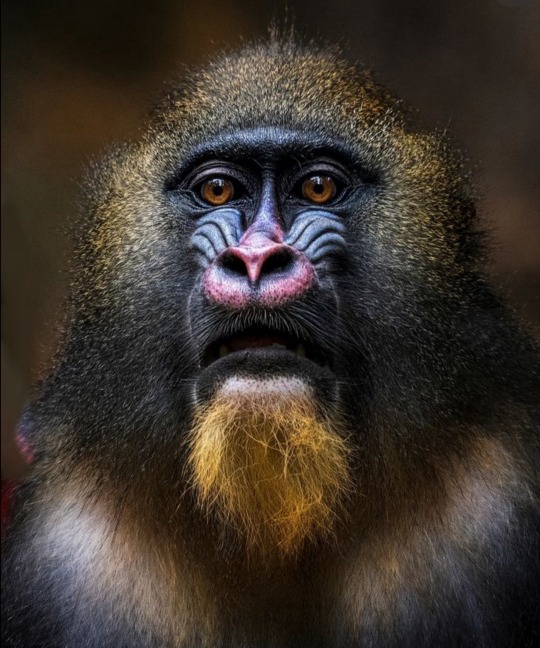#mandrillus
Text
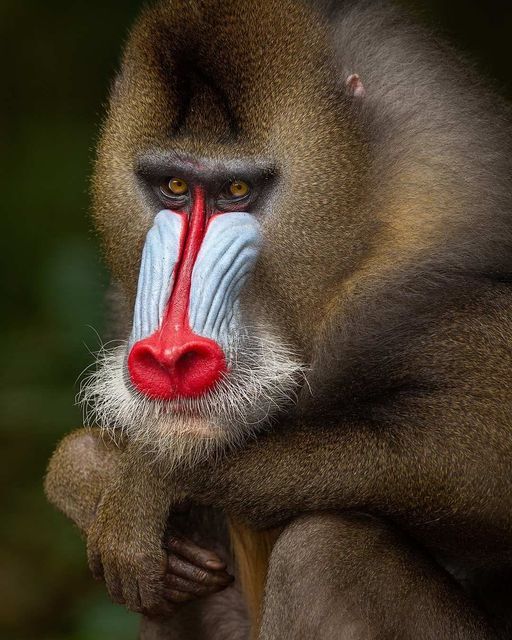
Mandrill (Mandrillus sphinx), male, family Cercopithecidae, Gabon
photograph by @mogenstrolle
89 notes
·
View notes
Text
Mandrill vs Gelada Baboon
2 notes
·
View notes
Text
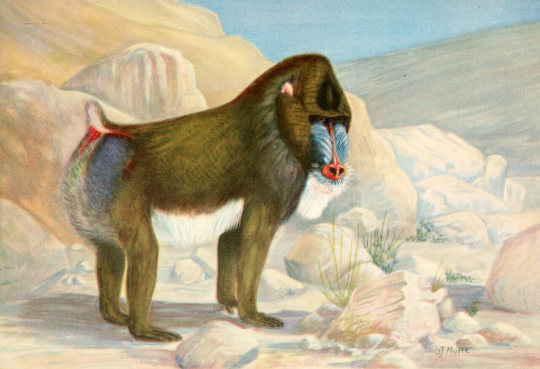
Mandrill | Olaus Murie (1889-1963)
#olaus murie#vintage art#animals#wild animals#animal art#mammals#wildlife biology#zoology#cercopithecidae#mandrillus sphinx#mandrill
17 notes
·
View notes
Text





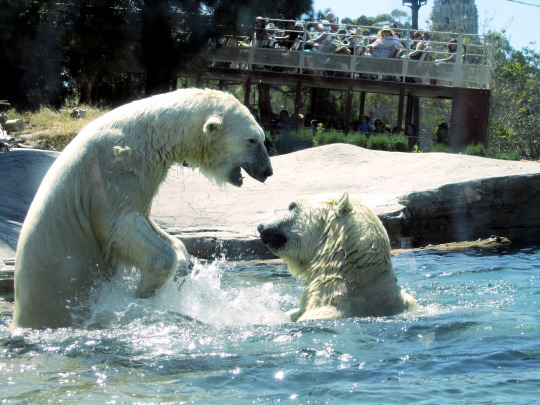


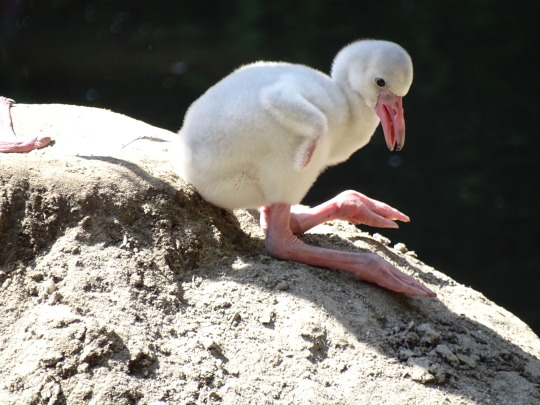


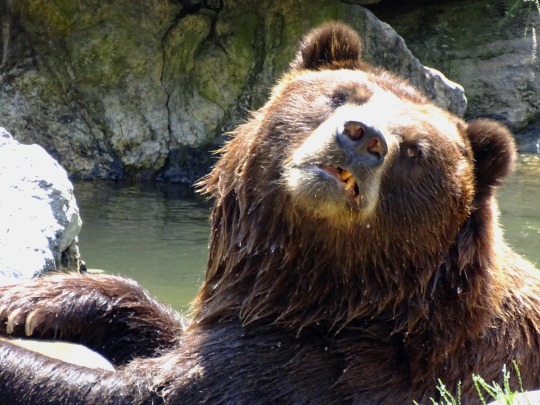



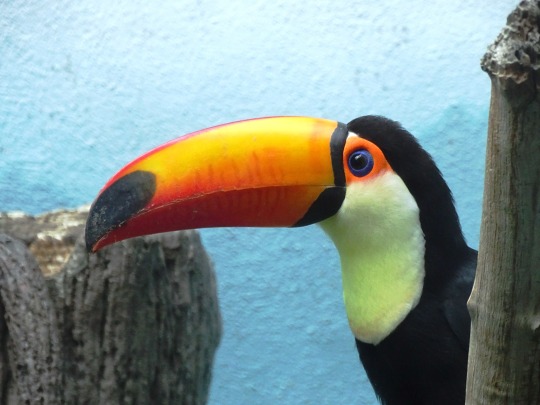

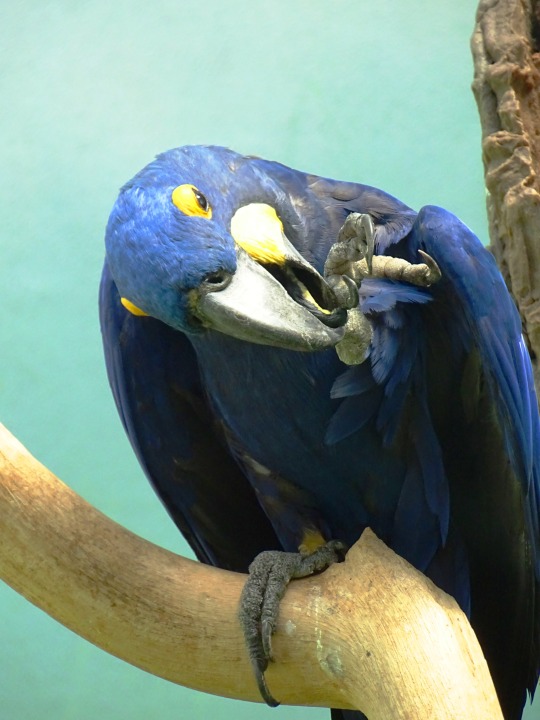



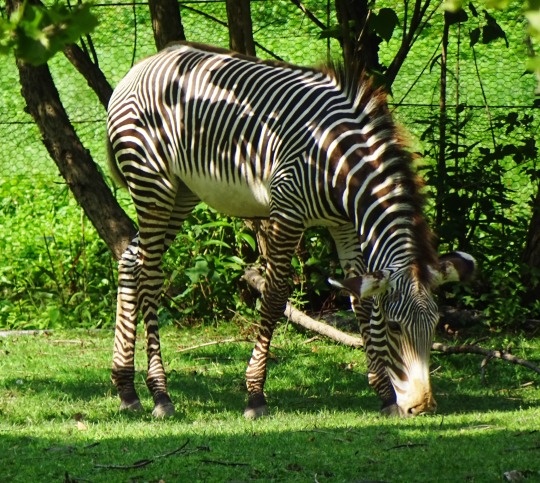
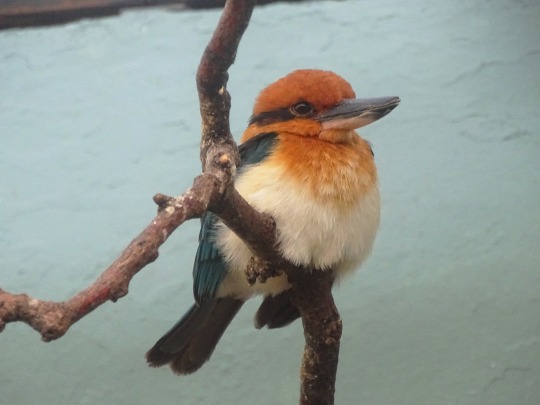

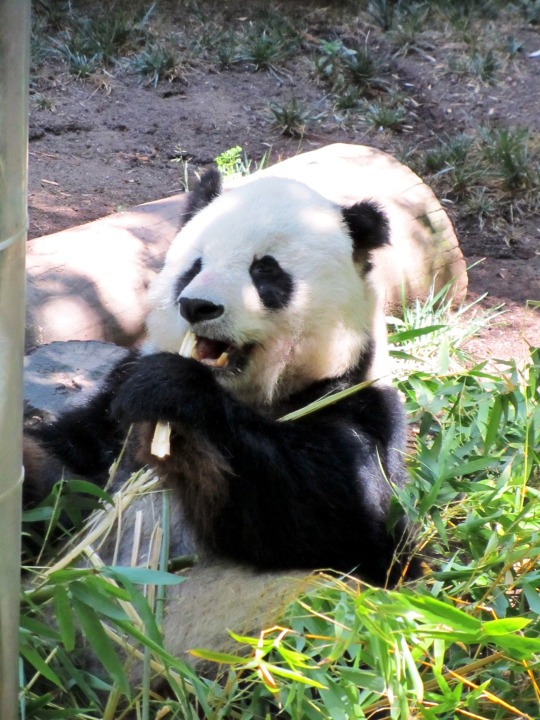
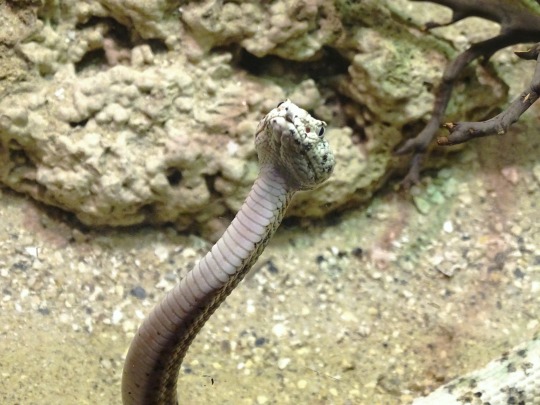


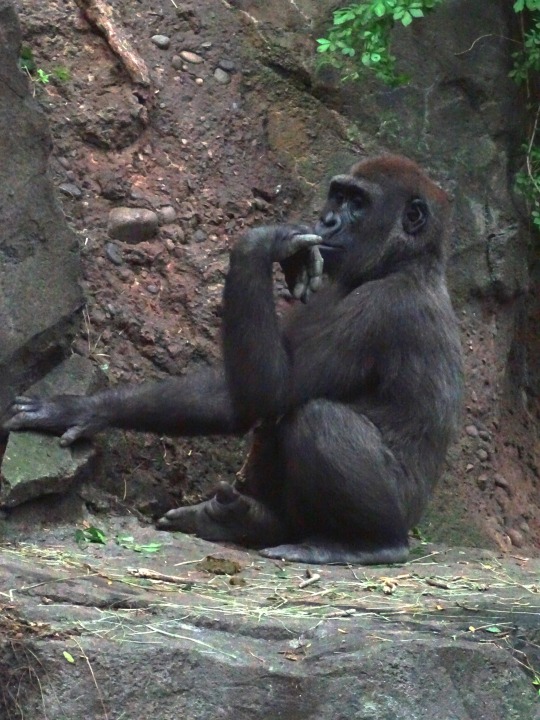

National Zoo Lovers Day
National Zoo Lovers Day, celebrated on April 8 in the U.S. brings all the zoo animal enthusiasts together to celebrate this significant day! Do you know how many animals were saved by zoos from going extinct? Yes, zoos are more than just conservation sites for endangered species, they also provide educational, research, and entertainment purposes. We can trace the history of zoos back to 4000 B.C. If you love animals, then this holiday is just for you. Visit a zoo nearby to find out about your favorite animals; you can also ask to volunteer at a zoo!
History of National Zoo Lovers Day
In the 7th century B.C, the Greeks had the habit of caging animals. ‘Alexander the Great’ sent many animals caught on his military expeditions to Greece. The earlier Egyptian and Asian zoos were kept mainly for public visitors and secondarily used for research purposes. During the 4th century B.C., the Greeks were more concerned with the research and experiment of captivated animals. The Romans had two different animal collections for arena and research objectives.
After the Roman Empire, zoos faced a downfall, but some private collections existed by Emperor Charlemagne in the eighth century and Henry I in the 12th century. King Philip VI had a menagerie in the Louvre, Paris, in 1333. Many members of the house of Bourbon had animal collections at Versailles. Later in 1519, a zoo was discovered in Mexico, which habituated birds, mammals, and reptiles. It was maintained by 300 zookeepers. In 1752, the Imperial Menagerie was founded at the Schönbrunn Palace in Vienna as the first modern-day zoo.
In 1828, two years after the Zoological Society of London was founded, the collection was created in Regent’s Park. By the mid 19th century, zoos were established worldwide. Among the existing zoos of today, more than 40 zoos are 100 years old. Most of these old zoos are in Europe. Since the end of World War II, there has been a fast and worldwide growth of zoos, many of which serve the purpose of public entertainment and economic gain rather than animal research. The exact number of public animal collections across the world today is unknown, although it is believed to be in the thousands.
National Zoo Lovers Day timeline
3500 B.C.
Hierakonpolis Zoo
The strange animal remains discovered near Hierakonpolis, Egypt's ancient capital, suggest the existence of a huge, exotic predynastic zoo.
1500 B.C.
First Real Zoo
Queen Hatshepsut establishes the first real zoo in Egypt.
30 B.C.
The Rise Of Private Zoos
From the shreds of evidence found in Egypt and Mesopotamia, private zoos show status among the wealthy in Rome.
1874
America’s First Zoo
America’s first zoo opens in Philadelphia, Pennsylvania.
National Zoo Lovers Day FAQs
Why do we need zoos?
Zoological gardens are needed to preserve biodiversity. Zoos provide a home to exotic endangered animals and have a history of saving many animals from being extinct.
Why are pet animals not allowed in the zoo?
Pet animals are not allowed in the zoo for various reasons. It can affect the health of zoo animals. Pet animals can be agitated by strange sounds, sights, and smells, which can bring out harm to anyone around.
Can I bring home the adopted animal?
Unfortunately, you cannot. The animals in the zoo cannot be brought up in a domestic household. You will be providing financial support for the animal you have adopted.
How to Celebrate National Zoo Lovers Day
Volunteer: Well, the greatest pleasure you can gain on National Zoo Lovers Day is by volunteering at a local zoo. It is a great opportunity to have a close observation of animals.
A family picnic: A great occasion to have an interesting yet informative family picnic. Take this opportunity to explore unique and exotic animals. You could also share some pictures on social media, spreading the word!
Adopt animals: Many zoos across the world provide animal adoption programs. You can show your love for conserving unique and exotic animals by adopting animals in zoos.
5 Fun Facts About Zoos That’s Sounds Too Good To Be True
Morning walks: Chendra, an Asian elephant in Oregon Zoo, likes to take a morning walk to meet her fellow zoo mates.
Entrance fee: 1/160th of a pound was charged as a zoo entrance fee at The Tower of London back in the 18th century; alternatively, visitors can also provide cats or dogs to feed the lions.
A valorous German Shepard: In 1987, a German Shepherd guard dog defeated an escaped Jaguar in Belgrade Zoo — in this valorous action, the dog saved the life of a zoo employee.
Giant pandas: China contains the ownership of all giant pandas worldwide and they are loaned to other countries at a rental price of one million dollars per pair, per year to raise funds for conservation programs in China.
Disk-throwing chimp: In Sweden, a 30-year-old chimp at Furuvik Zoo collects concrete disks to throw at the visitors.
Why We Love National Zoo Lovers Day
Fun-filled knowledge: National Zoo Lovers day reminds us to explore our local zoos. Every year, millions of people visit zoos and learn about many animals. It also provides a great opportunity for friends and families to have a fun time learning together.
Conserving the endangered: One great thing about zoos is conserving the species at the risk of extinction. An imbalance in biodiversity can bring a disastrous impact on the ecosystem. It reminds us of our responsibility towards nature.
Animal welfare: A wonderful day to remind animal enthusiasts to play their part in animal welfare. An opportunity for providing a large platform to gather support across the world.
Source
#National Zoo Lovers Day#ZooLoversDay#8 April#Bronx Zoo#vacation#my favorite zoo#New York City#summer 2018#2019#original photography#travel#animal#flora#fauna#Grizzly Bear#brown bear#Sulawesi hornbill#lion#inca tern#bald eagle#bird#nile crocodile#tiger#zebra#Silvery lutung#Mandrillus sphinx#Mandrill#close up#USA#tourist attraction
4 notes
·
View notes
Note
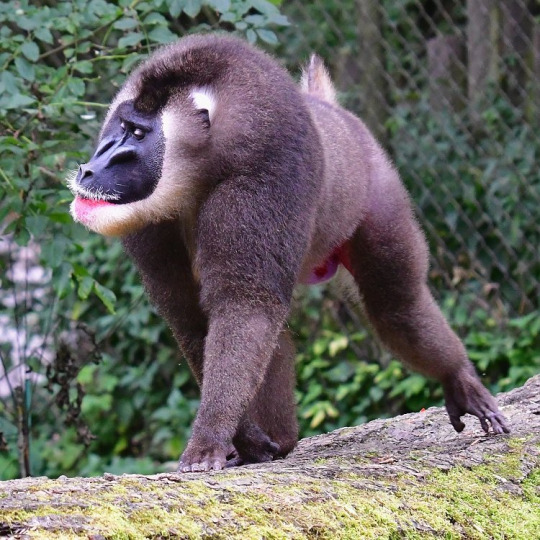
Hi there! What kind of fellow is this? Thanks. <3
Hello! This is a drill (Mandrillus leucophaeus)! They’re not as well-known as their red and blue faced cousins, the mandrills (Mandrillus sphinx)…

But drills are pretty colorful monkeys in their own right. And by that I mean that male drills have butts that would put an unicorn to shame!


542 notes
·
View notes
Text
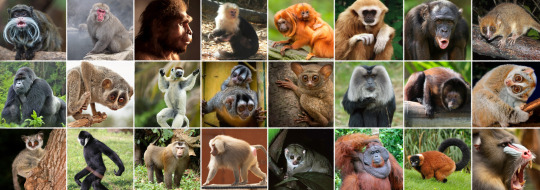
🦍The primate tournament list of candidates has been finalised! Polls will start going up soon!🦧
Thank you to everyone who submitted a species! Here is the full written list:
Basal primates (non-simian primates, including Strepsirrhini and Tarsiiformes)
†Notharctus (Notharctus tenebrosus)
Calabar angwantibo (Arctocebus calabarensis)
West African potto (Perodicticus potto)
Red slender loris (Loris tardigradus)
Bengal slow loris (Nycticebus bengalensis)
Pygmy slow loris (Xanthonycticebus pygmaeus)
Senegal bushbaby (Galago senegalensis)
Brown greater galago (Otolemur crassicaudatus)
Ring-tailed lemur (Lemur catta)
Verreaux’s sifaka (Propithecus verreauxi)
†Archaeoindris (Archaeoindris fontoynontii)
†Megaladapis (Megaladapis madagascariensis)
Madame berthe’s mouse lemur (Microcebus berthae)
Aye-aye (Daubentonia madagascariensis)
Philippine tarsier (Carlito syrichta)
Pygmy tarsier (Tarsius pumilus)
New world monkeys (Platyrrhini)
Wied’s marmoset (Callithrix kuhlii)
Goeldi’s marmoset (Callimico goeldii)
Bearded emperor tamarin (Saguinus imperator subgrisescens)
Golden-headed lion tamarin (Leontopithecus chrysomelas)
Panamanian white-faced capuchin (Cebus imitator)
Central American squirrel monkey (Saimiri oerstedii)
Gray-bellied night monkey (Aotus lemurinus)
Bald uakari (Cacajao calvus)
Madidi titi monkey (Plecturocebus aureipalatii)
Atlantic titi monkey (Callicebus personatus)
Black bearded saki (Chiropotes satanas)
White-faced saki (Pithecia pithecia)
Colombian red howler (Alouatta seniculus)
Brown spider monkey (Ateles hybridus)
Northern muriqui (Brachyteles hypoxanthus)
Yellow-tailed woolly monkey (Lagothrix flavicauda)
Old world monkeys (Cercopithecidae)
Mantled guereza (Colobus guereza)
Zanzibar red colobus (Piliocolobus kirkii)
Nepal gray langur (Semnopithecus schistaceus)
Silvery lutung (Trachypithecus cristatux)
Golden snub-nosed monkey (Rhinopithecus roxellana)
Proboscis monkey (Nasalis larvatus)
Red-shanked douc (Pygathrix nemaeus)
Collared mangabey (Cercocebus torquatus)
Japanese macaque (Macaca fuscata)
Rhesus macaque (Macaca mulatta)
Hamadryas baboon (Papio hamadryas)
Mandrill (Mandrillus sphinx)
Gelada (Theropithecus gelada)
Common patas monkey (Erythrocebus patas)
Bale mountains vervet (Chlorocebus djamdjamensis)
De brazza’s monkey (Cercopithecus neglectus)
Apes (Hominoidea)
Lar gibbon (Hylobates lar)
Pileated gibbon (Hylobates pileatus)
Kloss’s gibbon (Hylobates klossii)
Northern white-cheeked gibbon (Nomascus leucogenys)
Siamang (symphalangus syndactylus)
†Junzi (Junzi imperialis)
Bornean orangutan (Pongo pygmaeus)
†Gigantopithecus (Gigantopithecus blacki)
†Dryopithecus (Dryopithecus fontani)
Western lowland gorilla (Gorilla gorilla gorilla)
Chimpanzee (Pan troglodytes)
Bonobo (Pan paniscus)
†Australopithecus (Australopithecus afarensis)
†Panranthropus (Panranthropus boisei)
†Flores hobbit (Homo floresiensis)
†Neanderthal (Homo neanderthalensis)

The first set of polls will go up as soon as I have finished writing the descriptions! In the meantime, I would appreciate if you could share this tournament around- it won’t be much of a tournament if there aren’t that many people voting! In going down the research rabbit hole I’ve found so many interesting species and stories, and I promise learning about them here will be worth your time!
#primate bracket#tournament#tumblr tournament#poll#polls#primate#primates#extinct primates#biology#animals#zoology#please let me know if I made a mistake anywhere!
97 notes
·
View notes
Text

Mandrill (Mandrillus sphinx)
These extremely colourful primates are mostly terrestrial, but they live in the tropical rainforests of west Africa and still sometimes climb trees. They eat mostly leaves and seeds, but also many types of small animals. They have even been recorded hunting small antelope! Mandrills live together in groups called hordes, which can be made up of hundreds of members.
#markhors-menagerie#primates#old world monkeys#monkeys#animal facts#fun facts#animals#biology#mandrill
23 notes
·
View notes
Text
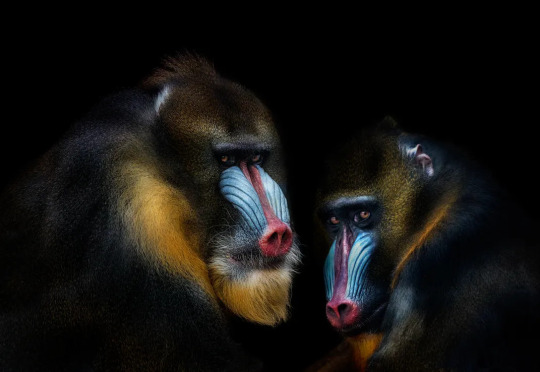
Mandrill
"Mandrillus sphinx"
14 notes
·
View notes
Text
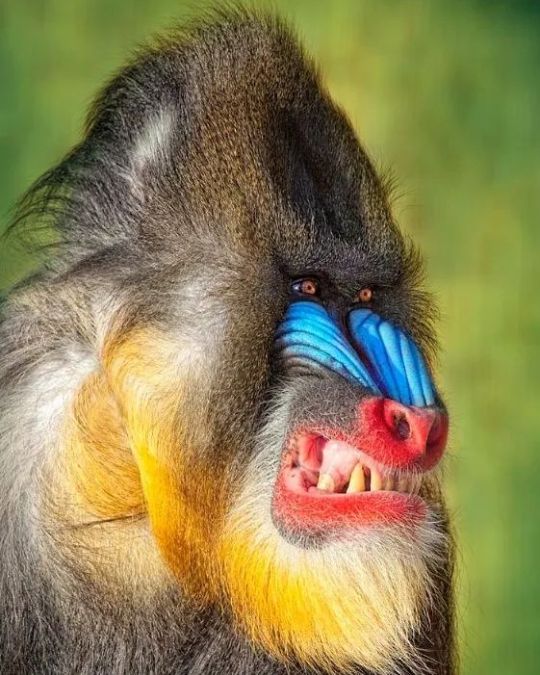
'Anger management'
The Mandrill (Mandrillus sphinx) is one of the most colorful mammals in the world, with red and blue skin on its face and behind. Males have a larger body, longer canine teeth and brighter coloring than females. The canine teeth can reach up to 4.5 cm (1.8 in) in males and 1 cm (0.39 in) long in females. Mandrills communicate with various facial expressions and postures, and male mandrills like to establish dominance with vocalizations. Display of threats would include open mouth staring, usually with a combination of head bobbing, ground slapping and raised hair.
📷 Robert Jensen
http://www.betterphoto.com/gallery/free/gallery.php?mem=25139
69 notes
·
View notes
Text

Hiroki Tsukuda, Problem Mandrillus, 2016, 240 x 220 cm
8 notes
·
View notes
Text

A female mandrill (Mandrillus sphinx) in the Akeley Hall of African Mammals at the American Museum of Natural History in New York City, New York.
“There has been a drastic decline in the mandrill population during recent years due to habitat destruction. They are especially vulnerable to hunters because of their loud calls. Mandrills are hunted as a local food source in several areas. Currently, mandrills occupy forests at a very low density and are poorly protectd if at all. As a result, they may be threatened with complete extinction in the wild.”
https://animaldiversity.org/accounts/Mandrillus_sphinx/#physical_description
#natural history#natural history museum#monkey#monkeys#animals#cute animals#american museum of natural history#AMNH#New York#New York city#nyc#taxidermy#endangered and threatened species#endangered animals#vulnerable animals#mandrill#dark acadamia aesthetic#dark acamedia#museum aesthetic#museums of new york
2 notes
·
View notes
Photo







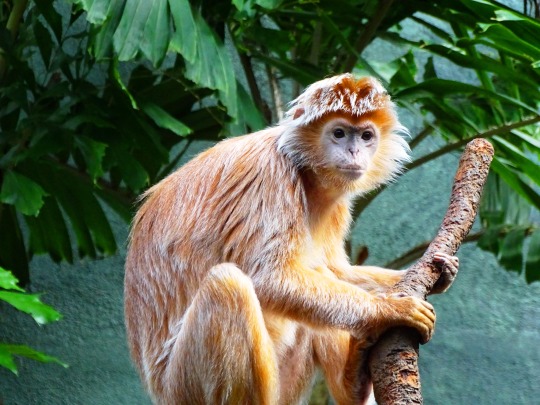


Monkey Day
Spend a day at the zoo with these cheeky creatures, throw a monkey-themed fancy dress party or fundraise to protect these precious primates.
Monkeys are interesting creatures – cute, mischievous, and sometimes downright obnoxious (anyone who disagrees has obviously never had their laundry torn down by a family of primates when it’s hanging to dry). Many species of primates are also endangered, and then there are questions of animal rights and the usage of primates in medical research. That’s why there’s Monkey Day, a day that’s been dedicated to raising awareness about non-human primates.
Learn about Monkey Day
Monkey Day has been created to celebrate monkeys, as well as “all things simian,” which includes lemurs, tarsiers, apes, and other non-human primates. It is a great day when it comes to raising awareness about different types of monkeys and primates around the world, as well as the issues they face and how we can help them.
Environmental activists and animal rights activities are especially vocal and passionate about this date. The same goes for art institutions and visual artists. Supporters and celebrates of this date include the Smithsonian Institution, the Metropolitan Museum of Art, the Louvre Museum, London’s National Portrait Gallery, National Geographic, Greenpeace, and Jane Goodall.
History of Monkey Day
Back in 2000, Casey Sorrow was an art student at Michigan State University, and he ended up writing “Monkey Day” on his friend’s calendar as a prank. But then they actually celebrated the occasion with other art students at MSU, and Sorrow later started collaborating with fellow MSU student on the Fetus-X comic strip, where the holiday was mentioned and popularized. Since then, Monkey Day has been observed internationally as a day to celebrate primates (including monkeys, but also apes, lemurs, and tarsiers).
Sorrow himself still does much to promote the holiday and the cause of primate welfare, and in addition to the Monkey Day website, he also maintains a “Monkeys in the News” blog which discusses primate-related news around the world and comes out with a list of the top ten primate-related news stories from the past year every Monkey Day.
Since Monkey Day was created, it really has gone from strength-to-strength. It is now celebrated in many different corners of the world. This includes Scotland, Turkey, Thailand, Colombia, the United Kingdom, Estonia, Pakistan, India, Germany, and Canada. It has been described by the Washington Post as a day to do the following:
“Learn something about these adorable and highly intelligent primates. Or you could use this day to act like a monkey.”
Monkey Day Timeline
2nd Century AD Claudius Galenus studies monkeys
In the early days of pioneering medicine Galenus (known as Galen) studied monkeys through dissection, noticing their similarities to humans.
1939 Flying monkeys are featured in film Wizard of Oz
In a strange and frightening portion of the plot, monkeys with wings act as minions released by the Wicked Witch of the West to scare off Dorothy and her friends.
1941 Curious George makes debut in books
As monkeys begin appearing in films and books, one of the most endearing monkeys will last in popularity for at least 80 years–Curious George. Although there are only 7 books in the original series by H. A. Ray, the character lives on through an animated television show, videos and even a 2006 feature film.
1959 First monkey in space
A squirrel monkey, Miss Baker, and a rhesus macaque, Able, were the first monkeys who made a successful launch and return to space. They were sent by the United States Air Force on a Jupiter rocket.
2000 Monkey Day begins
As a little joke, Casey Sorrow, a Michigan State University art student, wrote “Monkey Day” on a friend’s calendar just to be silly. Then, in more silliness, they decided to go ahead and celebrate the day with other art students. Later, Casey Sorrow became the co-creator of the weekly Fetus-X comic strip, which was used to promote the day.
How to celebrate Monkey Day
You could simply dress up in a monkey costume and play the part, because there are some people who do just that for Monkey Day and even hold competitions for it. Or you could spend the day at the zoo, because many zoos around the world do hold special celebrations for Monkey Day. Some of these events focus on educational events about monkeys, while others do things like auction off artwork created by chimps and performing intelligence tests on primates.
Even if a local zoo in your area is not hosting an event on this date, we would definitely recommend taking a trip to your nearby zoo and spending some time with the animals. Make sure you do take a look at their calendar beforehand, as zoos all around the world have special activities and talks going on. For example, at Australia’s National Zoo & Aquarium, they hold a number of educational talks and activities that are designed to raise money for endangered species, such as Cotton-top Tamarins in Columbia, as well as increasing awareness.
In Scotland, at the famous Edinburgh Zoo, they raise awareness about the different dangers that primates face by using monkey storytelling. Monkey Day events are also held at The Faruk Yalçın Zoo and Botanical Park in Darıca, Turkey to raise awareness. In India, the Indira Gandhi Zoological Park holds a number of different programs so that children can become educated about issues facing wildlife and so that people are encouraged to adopt monkeys. The list doesn’t end there either. In Pakistan, the Lahore Zoo really goes the extra mile. They hold educational events and art competitions about monkeys, including performances to highlight the threats they face, poetry readings about monkeys, and much more.
Even if you don’t have a monkey at your house, you might consider throwing a monkey day party, inviting all of your friends over (keep in mind that humans are in fact primates too, even without gorilla costumes), and common activities at such celebrations involve films such as King Kong, Planet of the Apes, and Lady Iron Monkey, as well as monkey-themed music (The Monkees, anyone?).
Often, celebrations involve fundraising for primate-related causes and charities, and many organizations around the world dedicated to primates hold Monkey Day events of various sorts. So when Monkey Day comes around, get out there and do it proper, by monkeying around!
Finally, another way that you can celebrate Monkey Day is by watching a film based on this primate! There are so many different types of monkey films. Of course, the Planet of the Apes series of films is the most well-known, but there are many others. Disney’s Monkey Kingdom comes highly recommended. Other famous monkeys on our screens include the Chain-Smoking Capuchin in The Hangover Part II, Clyde in Every Which Way But Loose, Cheeta in Tarzan the Ape Man, George in Curious George, Joe in Mighty Joe Young, and King Louie in The Jungle Book.
Source
#Gelada Baboon#Wolf's mona monkey#2019#Bronx Zoo#New York City#my favorite zoo#indoors#original photography#animal#travel#vacation#tourist attraction#landmark#Mandrillus sphinx#outdoors#ebony lutung#Western lowland gorilla#Black-and-white colobus#Monkey Day#19 December#InternationalMonkeyDay#I really love the first pic
6 notes
·
View notes
Photo

'Anger management’ The Mandrill (Mandrillus sphinx) is one of the most colorful mammals in the world, with red and blue skin on its face and behind. Males have a larger body, longer canine teeth and brighter coloring than females. The canine teeth can reach up to 4.5 cm (1.8 in) in males and 1 cm (0.39 in) long in females. Mandrills communicate with various facial expressions and postures, and male mandrills like to establish dominance with vocalizations. Display of threats would include open mouth staring, usually with a combination of head bobbing, ground slapping and raised hair. #mandrills #baboons #wildlifephotography #wildlifeonearth #colorfull (at Catalina Foothills, Arizona) https://www.instagram.com/p/Cm5ZLjDLSronz8DKtNdWQTBrUuFCKlOhZSG1680/?igshid=NGJjMDIxMWI=
4 notes
·
View notes
Text
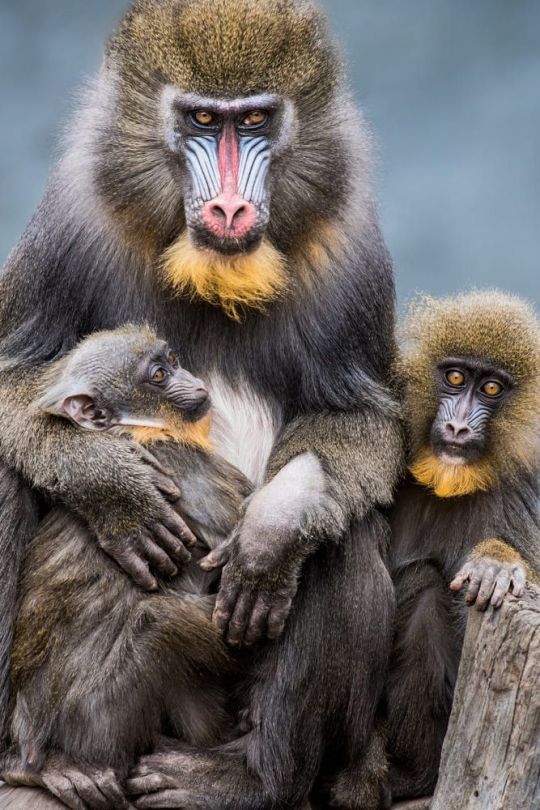
Mandrill Family. The mandrill (Mandrillus sphinx) is a large Old World monkey native to west central Africa. It is one of the most colorful mammals in the world, with red and blue skin on its face and posterior.
0 notes
Text
Round 2, match 11: miscellaneous monkeys
Japanese macaque (Macaca fuscata)

Beaten only by humans for the title of the furthest-north primate, this monkey lives in a huge range of climates on the islands of Japan, including snowy and mountainous regions. They are famous for their habit of spending time in hot springs to escape the cold. They are also rather intelligent, one group of macaques inventing the idea to wash their food before consumption. They eat a variety of foods, including leaves, fruits, bark, roots, insects, fish, soil, and fungus. Finally, the Japanese macaque is another species of monkey in which homosexuality has been documented; it has even been proposed that most female members of this species are bisexual!
Mandrill (Mandrillus sphinx)

These extremely colourful primates are mostly terrestrial, but they live in the tropical rainforests of west Africa and still sometimes climb trees. They eat mostly leaves and seeds, but also many types of small animals. They have even been recorded hunting small antelope! Mandrills live together in groups called hordes, which can be made up of hundreds of members.
17 notes
·
View notes
